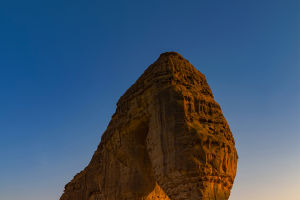Hallett Cove Conservation Park is a treasure trove of cultural and geological heritage, offering a window into Australia's ancient past.
Its interpretative walking trails narrate the story of an ice age from 280 million years ago, making it a must-visit destination for nature enthusiasts and history buffs alike.
The Glacial Pavements: A Global Phenomenon
Australia’s Best Record of Permian Glaciation
Dear Lykkers! The park's northern clifftops showcase remarkable glacial pavements, recognized as the finest record of Permian glaciation in Australia. These pavements hold international significance, capturing the traces of an ancient glacier that shaped the landscape millions of years ago.
A Journey Through Time
Dear Lykkers, the scratches and grooves visible on the glacial pavements were etched by rocks carried at the base of the glacier. These formations are a testament to the forces of nature that sculpted the terrain when South Australia was joined to Antarctica.
The Sugarloaf: A Geological Marvel
Formation and Layers
The Sugarloaf is one of the park's most iconic features, located within the Amphitheatre. It narrates the story of glaciers and erosion over millions of years. This geological wonder showcases sediment layers, each with a unique history:
Base Layer: A dark red layer formed by sediments left behind by a glacial lake.
Middle Layer: A white layer of sands deposited as the glacier melted approximately 280 million years ago.
Top Layer: A layer of topsoil carried by creeks and rivers from surrounding areas, shaped further by erosion.
Protecting the Sugarloaf
The fragile nature of the Sugarloaf requires careful preservation. Visitors are encouraged to admire its beauty but avoid touching or climbing the formation to ensure its longevity.
Seasonal Highlights: When to Visit
Summer
Warm summer days are perfect for exploring the underwater world off the coast. Snorkeling offers a refreshing escape from the heat, allowing visitors to discover the vibrant marine life.
Autumn
Cooler temperatures make autumn ideal for hiking the park's trails. The Coast Park Path, a 7.2 km one-way trail connecting Hallett Cove Conservation Park to Marino Esplanade, offers spectacular coastal views. For convenience, a train ride can bring you back to your starting point.
Winter
Winter's stormy seas and dramatic skies provide excellent photography opportunities. The Black Cliff Lookout is a vantage point for capturing the waves crashing against the cliffs.
Spring
Spring rewards visitors with sunny days and blooming wildflowers. The Glacial Hike combines stunning geological features with vibrant flora, creating a feast for the senses.
Wildlife Encounters
Birdlife and Reptiles
The park is home to diverse wildlife, including nankeen kestrels, singing honeyeaters, and quail. Reptiles like skinks, blue-tongues, and snakes are also common. Visitors during warmer months are advised to stay on trails, make noise while walking, and wear appropriate attire to stay safe.
Marine Life
The rock pools teem with sea stars, and urchins. Interpretive signs along the park's trails provide fascinating insights into these marine creatures.
Unforgettable Views
Black Cliff Lookout and Amphitheatre Rim
Both lookouts offer breathtaking views of the coastline and geological formations. Sunrise and sunset visits are highly recommended, as the lighting enhances the colors of the sediment layers, creating a mesmerizing scene.
Celebrate the Park of the Month
This December, Hallett Cove Conservation Park takes center stage in Adelaide's "Park of the Month" celebration. Visitors can join events like kayaking, snorkeling, geological tours, and botanical walks, making it an exciting time to explore the beauty of this coastal gem.
Hallett Cove Conservation Park is not just a destination but an experience, blending natural beauty, geological wonders, and cultural heritage into a memorable adventure for all.


